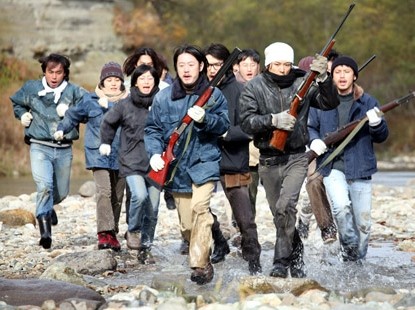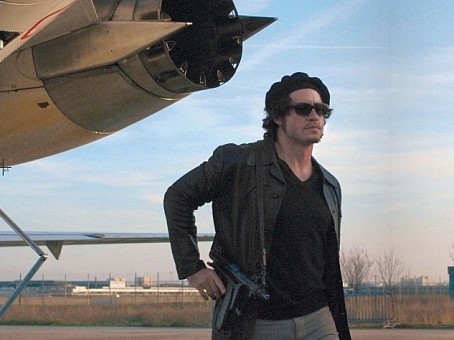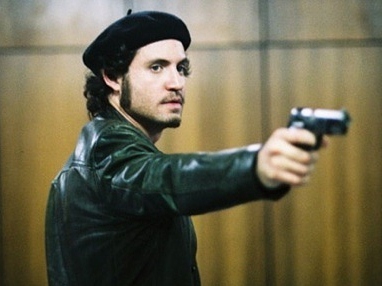Faye Dunaway once told me that to play a role she had to commit to the character with all her heart and soul. She needed, she explained, to love the character.
In terms of performance this means the actor has to empathize and identify with the fictional character. The danger lies in a character who is evil. If a skillful actor identifies and loves a character, as Faye, a brilliant actress, did with the homicidal Bonnie Parker in “Bonnie & Clyde”(1967), or the amoral Diana Christensen in “Network” (1976), then the audience will also love the character. Because movies are a moral landscape, sympathetic villains can be something of an ethical problem.
We allow for a certain amount of romanticism in the movies. After all, that’s why we go to the movies. But what happens when the subject of the film is contemporary terrorism — evil which should be beyond gauzy romanticism?
Let’s survey three powerful and effective movies whose subject is terrorism and true-life terrorists. And though each film is quite different, they all share a basic dramatic approach that short-circuits the problem of glorifying vicious and nihilistic terrorists. The classic three-act dramatic structure is hard to discern in these films. Instead, the narratives seem to meander aimlessly–in fact, each movie is tightly structured–as they follow, with almost documentary precision, the multiple story-lines that are the stuff of these real life stories. The reliable and audience pleasing set-up and pay-off that is the DNA of classic Hollywood movies is entirely absent. In addition, all three films are foreign productions with subtitles. Extra long, each movie — one is a five hour mini-series — demands a substantial time commitment and unusual concentration. Each film has numerous characters that come and go and cover timelines that stretch over many years. Most important, each film tries to stick with the true story facts as closely as dramatic structure allows.
All three films, though dealing with different terrorist movements, also reveal that international terrorists share several basic personal and ideological traits.
1. Each terrorist group was composed of comfortable, well-educated middle-class kids who imbibed Marxist-Lenninist ideology — verbal flatulence subordinates reality– and then morphed into narcissistic, utopian killers.
2. Riven by internal quarrels, the terrorists betrayed, tortured and murdered one another in kabuki-like ritual.
3. The terrorist cells used anti-Zionism as a mask for Jew hatred.
4. Each group forged close ties with Palestinian terrorists.
5. Sexual pathologies infected both male and female members of these terrorist gangs.
6. Zero laughs. I challenge you to find a more joyless, dour, wretched group of people on the face of the earth. Terrorists have no sense of humor. Not even irony exists in their sterilized consciousness. It’s all kvetch, kvetch, kvetch with these terrorists. The only time I cracked a smile was when Carlos the Jackal had liposuction. Because a terrorist with love handles is, I suppose, totally uncool.
7. The women terrorists were–and are–far crazier and blood-thirsty than the men. Hence an Israeli sniper once told me of the IDF counter-terrorist doctrine called: “Shoot the female terrorist first.”

“United Red Army,” 2007. Britain’s finest general of the second World War, Field Marshal William Joseph Slim, once characterized imperial Japan as the “greatest army of insects the world has ever known.” He was referring to a unique Japanese social cohesion and conformity that bred a culture of subservience.
The student movements of the late 1960s spawned a Stalinist-style Japanese terrorist faction, United Red Army, that was, in its own way, an insect army of terrorists. The title of this film is ironic because the United Red Army was only united in their murderous impulse to torture and murder — mostly one another. Retreating to their mountain hideouts, 12 members were murdered for infractions such as improperly cleaning a gun, wearing make-up and kissing. In one ghastly scene, a young woman beats her own face to a bloody pulp in a session labeled self-critique. Ultimately, these young Japanese became the parents they so despised who committed unspeakable atrocities during World War II. There are numerous characters, and it’s hard to keep track of all the crazies, but this is a powerful, gruesome film. It is impossible to come away feeling anything other than disgust and contempt for these sadistic monsters.

“The Baader Meinhof Complex,” 2008. The Red Army Faction were German terrorists who also came out of the student movements of the ’60s. Known as the Baader Meinhof Gang, these Marxist-spouting lefties saw themselves as heroic revolutionaries. But the film reveals them as a gang of homicidal losers, sleazy sexual predators and, of course, uber Jew-haters. One female member proves her revolutionary credentials by abandoning her husband and small children. Another woman sets up her parent’s best friends for assassination over afternoon tea. A core group trains with the PLO but gets in trouble with the Muslim terrorists when the German women insist on sunbathing in the nude. The Red Army faction terrorized Europe with kidnappings, bank robberies, bombings and murders for several years before the German authorities finally killed and arrested the active members who were just rebooted Nazis. As with “United Red Army,” the film presents dozens of characters and covers several years. This is an extraordinary look into a very particular German evil.

“Carlos,” 2010, is a three-part mini-series broadcast in America over The Sundance Channel. This is a remarkable look into the career of Ilich Ramírez Sánchez, known as Carlos the Jackal. A notorious international terrorist, Carlos, a Venezuelan, saw himself as the rock star of terrorism. Che chic, he wore a black beret, a bad-boy leather jacket and fed sympathetic journalists juicy bits of terrorist gossip. Carlos murdered two French policeman and hijacked a 1975 OPEC meeting in Vienna, two actions that put his name and face on the front pages — which he loved.
The name Carlos was given to him by the Popular Front for the Liberation of Palestine, a group he joined in 1970. Carlos presented himself as pure idealist who fought for “the people,” but the film makes clear that he was just a mercenary thug hiring himself out to the highest bidder: East Germany, Libya, Sudan, Syria, a laundry list of totalitarian regimes. Not surprisingly, Carlos converted to Islam in order to solidify his relationship with Jew-hating Arabs. And of course, Carlos hit on every over-bred, over-educated Marxist groupie babe who crossed his path demanding submission to his, ahem, “revolutionary discipline.” He also got his jollies by beating up prostitutes. Apparently these unfortunate women did not qualify as members of the beloved proletariat. Currently Carlos is serving a life sentence in France. He claims he was set-up by the Mossad. Where is the guillotine when we need it?
All three films are available on Netflix.

COMMENTS
Please let us know if you're having issues with commenting.